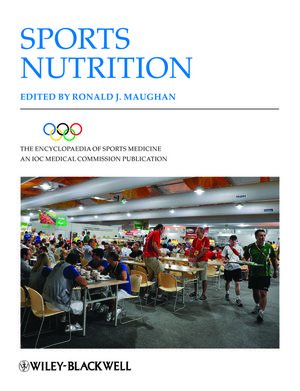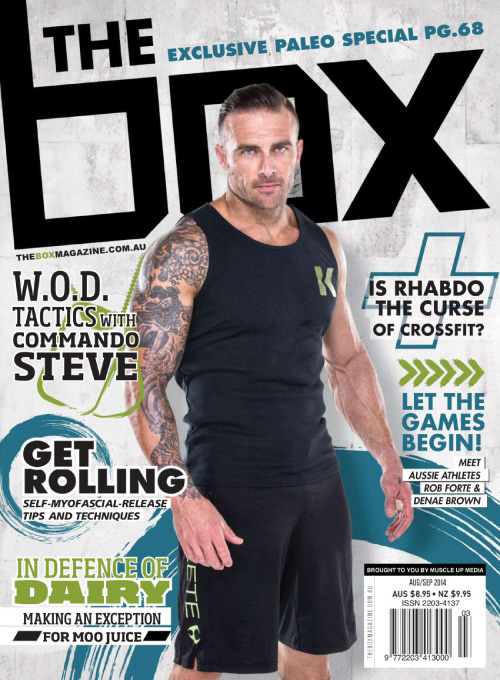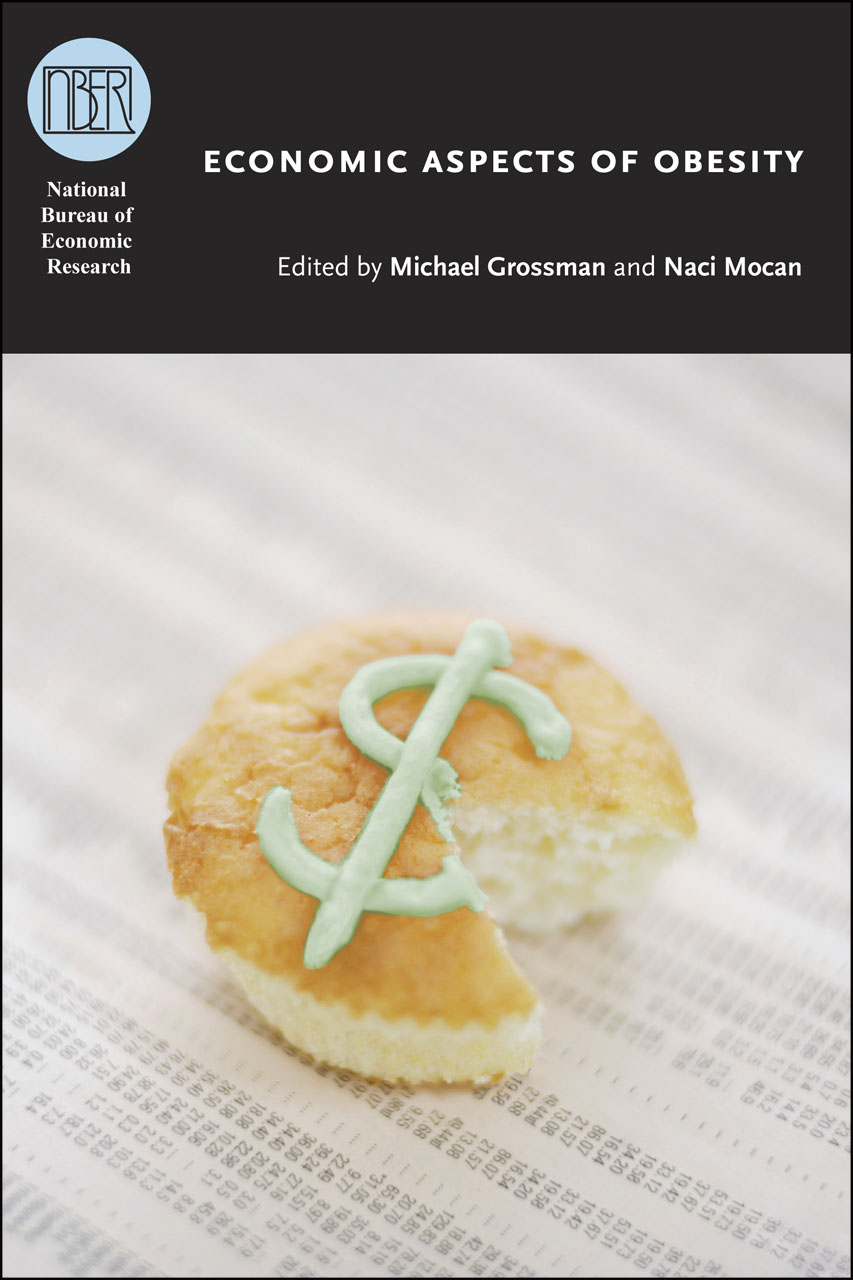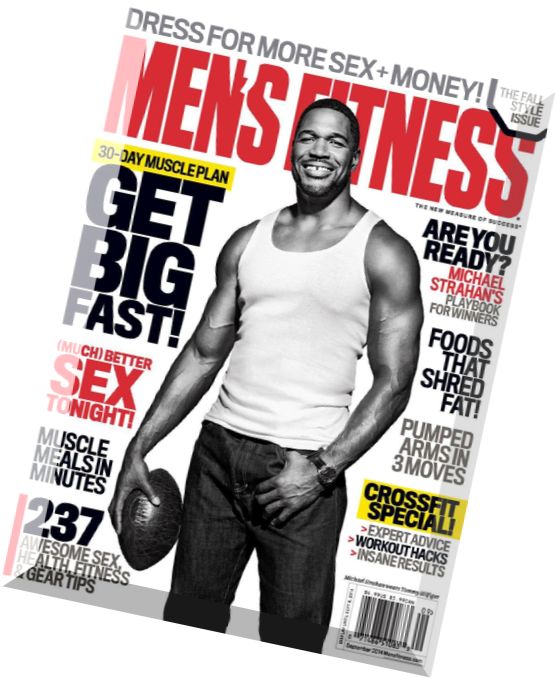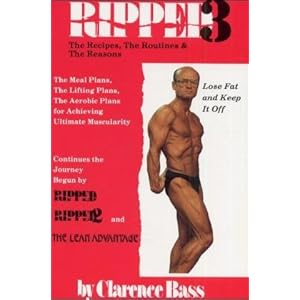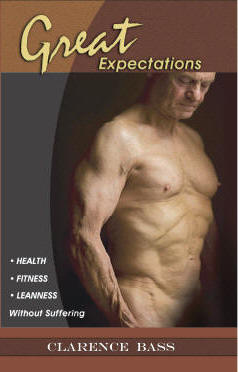I have previously described a method called the Weight Star Method which I use as a growth technique. Whenever I use a heavier weight for the same amount of reps as my last workout on an exercise - or if I do more reps with the same weight - I put a star beside the exercise. This applies only to my last set, and I've learned that if I'm going to use more weight than I did before - and I don't use much more, maybe 5 lbs - I employ three sets of each exercise, especially at the beginning of the workout session, to properly warm up the muscles and get a good pump for each exercise movement. Two sets sometimes aren't enough when you are using heavier weights. I stretch longer between sets and rest longer too, to enable me to handle the heavier load.
When I employed the weight star method in the past I usually exceeded my previous poundages on about one third of the exercises I'd perform in one workout. These weren't my all time greatest performances, but my most recent best efforts, usually compared to to the last time I did the exercise. Instead of constantly skipping around with new exercises every workout, I keep the exercises I've found to work best for me, that give me a pump in the desired area and don't aggravate injury. Over my almost 50 years of consecutive weight training there are quite a few exercises I can no longer perform because they hurt. My rule is "If it hurts, don't do it." Sort of the antithesis of "No pain, no gain," a maxim religiously adhered to by younger bodybuilders inexperienced with injuries. Not that I'm that smart, the longer I train the more I realize how much I still don't know, and I'm still learning. So I stick with the exercises that feel good, give me a good pump exactly where I want it, and don't cause joint pain. Naturally, these exercises are determined by what equipment yo have access to in your training facility. I have just about everything in my 600 square foot Zane Experience Gym and I hate to train anywhere else. And from time to time I "invent" new exercises.
As part of an innate natural curiosity, I've always been interested in discovering new movements, exercise pathways, the groove which resistance moves through, the pattern it traces out in three dimensions. It's very interesting to find new movements on an exercise machine as well as more standardized basic equipment. Here are a few variations I've been using lately in my workouts and how they can be helpful. [You can, of course, adapt these ideas to the equipment you have available, or use these ideas to create your own ideas on various training movements.]
Using the Hoist V-1 Machine
Preacher cable curl, rope preacher cable reverse curl, overhead press lying flat on my back, and decline press in vertical position.
Hoist Hyperextension Bench
I've been doing hyperextensions supersetted with leg curls, and barbell curls leaning over the hyperextension bench.
I'll explain more about these movements in the context of my current workout routine. I'm going to describe my 3 way split workout and give the poundages I've worked up to compared to what I was using a few months ago.
As I continued to grow stronger each workout I wondered just how strong I would become, when would it be time to cut back the poundages and go for more reps with less rest between sets. This is how ti always worked for me in the past: build up the weights over several months, usually during the spring and early summer, then late summer and early autumn keep the poundages I've grown accustomed to and do more reps with less rest between sets. I got my answer to this question in early June, but first things first.
My torso workout consisted of 10 exercises. I'll list each one with my best weights and reps and compare this to what I was doing previously.
Front Pulldown -
Now: 150 x 12, 165 x 10, 180 x 8 reps.
Before: 135 x 12, 145 x 10, 155 x 8.
Low Cable Row -
Now: 165 x 10, 180 x 8.
Before: 120 x 12, 130 x 10.
Shrug on Panatta Curl Machine -
Now: 168 x 12, 178 x 10.
Before: I was not doing any shrugs.
Rear Deltoid Machine -
Now: 120 x 12, 130 x 10.
Before: 70 x 12, 80 x 10.
One Arm Dumbbell Row -
Now: 70 x 10, 85 x 8.
Before: 40 x 10, 50 x 8.
One Arm Rear Deltoid Machine -
Now: 195 x 12, 220 x 10.
Before: I was not doing this exercise.
V-1 Incline Press -
Now: 100 x 12, 110 x 10.
Before: I was doing front press on a Soloflex Machine with springs and 20, then 30 lbs added resistence. Both movements are arc presses where front delts and upper pecs are worked. But the V-1 allows me a neutral grip and feels a lot like the Arnold Press we did with dumbbells in the 1970s.
V-1 Decline Press -
Now: 110 x 13, 120 x 11.
Before: Low incline dumbbell press: 40 x 10, 45 x 8.
Pec Deck -
Now: 145 x 10, 165 x 6.
Before: 115 x 12, 130 x 10.
Pullover Machine -
Now: 160 x 10, 170 x 8.
Before: 140 x 10, 150 x 8.
This was during my initial 2005 experiments with nanotechnology patches [
Building the Body, Spring 2005]. The results were quite dramatic. My strength increased rapidly, and I also noticed something interesting from using these heavier weights in the more recent workouts. Not only was I stronger but I felt like training heavier. I was being motivated by the strength of my new success. Previously I felt resigned to never using more than 50 lbs on one dumbbell rows; now I had to make up a new 85 lb dumbbell to do this exercise. Following the dumbbell row with one arm rear delt machine where I push the roller back with one elbow, sort of like a one arm row but not involving the biceps, gave me an incredible pump after each superset. I felt huge and wide, and my lats were hanging way out to each side.
Along with my new training drive was a difference in soreness latency. I didn't get sore the day following the workout, the main soreness effect hit home two days after the workout. I reasoned it was that the heavier weights penetrated down deeper into the muscles and the resulting micro trauma took longer to heal. Given adequate rest, I found myself growing and went from 178 to 186 lbs with a slightly smaller waist.
I'd been applying the nanotechnology patches to the shoulder points at 8 a.m. and removing them 15 hours later. I did feel more energy throughout the day, but the main effect I noticed was increased strength in my workout, requiring more time for recuperation in order to grow.
It was the same story on legs. After a day of rest, I'd apply the patches in the morning on each calf an inch below the outer part of my knees, and several hours later do the following workout:
Leg Curl -
Now: 90 x 12, 100 x 10.
Before: 70 x 12, 80 x 10.
I was getting as strong as I had been while training for the Olympia on this one. Immediately after each set of leg curls I'd superset hyperextensions for 15 reps, on my new Hoist angled hyperextension bench. My hamstrings got a maximum pump; even my calves got pumped. After adequate one leg up stretching I'd move on to -
Leg Extension -
Now: 160 x 12, 180 x 9, 200 x 6.
Before: 150 x 12, 160 x 10.
I supersetted this with -
Leg Press -
Now: 200 x 12, 220 x 10, 240 x 8.
Before: 140 x 12, 150 x 10, 160 x 8.
This method of doing leg presses immediately after leg extensions is really demanding, making me breathless, as well as giving a tremendous quad pump. I needed a good 3 to 4 minutes rest between each of these supersets.
Then it was time for Leg Blaster squats. I changed my foot position by moving them all the way forward, put on my lifting belt for this one to keep my lower back warm.
Now: 160 x 12, 170 x 10, 180 x 8, compared to
Strict Sissy Squat: 80 x 12, 100 x 10 then.
My new form wasn't as strict as the former sissy squat but it wasn't cheating either - I was going deep into the squat keeping my upper body erect, not sticking my butt out in back as in the case of conventional barbell squatting.
I was actually becoming too strong for my own good.
Wondering how long these new strength increases would continue, I plodded ahead using heavier weights in most exercises each workout. I should have known better from past experience that there is a limit to strength gains. If you keep using heavier and heavier weights you find your limit and it is accompanied by injury.
The clue I should have paid attention to was the fact that my calves had been getting very sore and I wasn't even doing that much calf work, usually donkey calf raises on the Nautilus Multi Purpose machine, 20 reps with 200, 15 with 220, then a drop set on seated calf raises doing 120 x 5, 110 x 5, 100 x 4, 90 x 4.
On May 12th I decided to go for reps with 110 in the leg curl after having completed 10 with 110. My lower hamstrings were tight and after a few reps with 110 I let the weight stretch down a little too far and felt a sharp pain in the back of my left knee. So much for heavy leg curls, I thought, at least I could train everything else heavy, I'd just back off the weight on leg curls. Next leg workout, which was almost a week later, I used 40 then 50 lbs in the leg curl and subsequently worked up to 70 for 10 reps without any pain. Everything seemed to be okay, or at least so I thought.
After my trip to Venice Beach to receive the Muscle Beach Hall of Fame Award - I'd walked around a lot with a 30-lb back pack containing all my gear for the trip - I went through a two day sequence of workouts with a client. We did upper body work one day, and legs the next day. I only did one set of calf raises, 18 reps with 220 lbs in the donkey calf raise and the next day my calves were really sore. The following day I was shopping at a local health food store with Christine when my left calf went into severe spasm. Limping back to my car, I took off my jeans when I got home to discover my left calf had swollen up at least an inch.
This calf has always been a little smaller than my right one, now I had made it bigger! Not exactly what I had in mind, it was so sore I couldn't walk for two days, and then began limping around, applying brief ultra sound once a day, DMSO at night and ice before bed. Christine finally persuaded me to see a doctor, so we drove to Kaiser Permanente clinic a few days later. The doctor wasn't very encouraging, he said I may have torn my gastrocnemius or soleus and not to work out for 8 weeks! I told him I had to train, but I'd take it easy and not do any leg work until the swelling and soreness went away.
The next day I spent the afternoon getting X-rays, blood tests, and ultra-sound on the calf and thigh to see if a clot had developed. The blood test showed that clotting factors were in my blood so I had the ultra sound test done and it showed no clot. So I took my pain medication and went home, staying off my feet as much as possible.
As I write this, almost two weeks later, I'm walking normally, doing ultra sound and ice every day, still not training legs, but working torso one day, resting two days, then hitting arms. What I learned from the hospital diagnosis is that I had developed a 'Baker's Cyst' caused by a slight tear in my upper calf insertion in the back of my knee from the heavy leg curls. The cyst was a small mass on the back of the knee filled with sinusoidal fluid and the stress of the trip to Venice Beach and subsequent calf work afterwards caused the cyst to rupture, the fluid leaked out and the calf swelled up. It's slowed me down but hasn't stopped me. Leg work is out for now, probably not for much longer, as soon as the leg gets back to normal I'll start light stuff again. Upper body workouts are undeterred, I'm just not going heavier for now. Here's my arm workout -
Close Grip Bench Press on Smith Machine -
110 x 20, 130 x 12.
I've always noticed more growth in my triceps when I do close grip bench presses with the hands 12 inches apart. You can do this with a barbell or an EZ curl bar, but I prefer the isolation of a Smith Machine.
After I complete my several sets of close grip benches on my Smith machine, doing very slow negatives and not quite locking out at the top, holding the arms back stretch with both arms for 15 seconds after each set, I start on the mainstay of my triceps routine:
Dip Machine:
165 x 12, 175 x 10, supersetted with
Triceps Extension/Pressdown:
45 x 12, 50 x 10
to a burn.
This superset for triceps gives me an incredible pump. The idea is to do a compound exercise that works large muscle groups and triceps as well, then without any rest go right to a triceps isolation exercise movement and just keep doing reps until a burn comes on. I hold the lockout position on the pressdown/extension for a second and bring the bar back to my forehead with a slow negative. Right afterwards I do the one arm shoulder stretch, then wait a good three minutes before I repeat it with heavier weights.
I've found it much more productive and time saving to train arms like this, with no rest between the 2 exercises of the superset. Go for a burn and you won't need to do endless sets. Of course, once I get rolling with my summer workouts I'll add another superset to this combo.
Sometimes I do a few sets of one arm dumbbell extension at the end of my triceps workout to isolate the rear long head of the triceps, stretching really low with the dumbbell each rep. I lean slightly backward when doing this to get as deep as possible and don't lock out at the top of the movement. Between sets I do the one arm shoulder stretch.
Then it's time for biceps work. I usually start with 2 sets of one arm curls on my Panatta Machine (if you don't have access to one of these, one arm dumbbell concentration curls are an excellent substitute). I use 55 lbs for 12 reps, then 66 for 10 reps.
Next it's face down incline bench curls on the hyperextension bench.
60 x 12, 70 x 10.
Another variation of this exercise I like doing is with 20 to 25 lb dumbbells, leaning forward on a 70-degree incline bench. This peaks the biceps when I curl the dumbbells all the way up.
I finish off biceps with preacher cable curls.
100 x 10, drop to 80 x 8, rest 3 minutes, 110 x 8, drop to 90 x 6. I get an incredible burn doing these two drop sets and I'm convinced my biceps will grow this summer by continuing this treatment. That takes care of biceps, only 3 more exercises for forearms to go.
Preacher bench rope reverse curl -
80 x 10, drop to 70 x 6 then
Barbell wrist curl -
80 x 30 fast reps then
Gripper for 20 reps and that's it for arms.
I've been doing leg raises, hanging knee ups, crunches, and seated twists a the end of upper body workouts. I still have to take time off before I start serious leg work again, so I've been training torso, resting 2 days, then training arms and resting 2 days, then training arms and resting 2 days. I'd started treadmill and stationary bike (along with my archery training - I'm getting the hand of shooting left handed, and getting more accurate), but now this will have to wait until the calf heals completely. I plan to increase the ab work to 500 or more reps per workout (I keep telling myself this but it hasn't happened yet). In the past my serious training starts after my birthday the end of June, as I suspect it will this year. I plan on reaching a peak before Thanksgiving this year so I'll have something specific to be thankful for.

